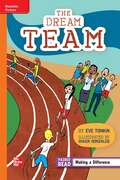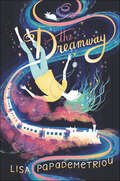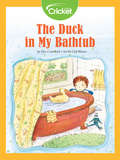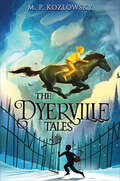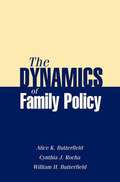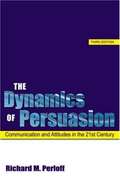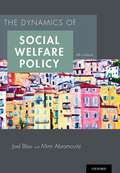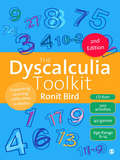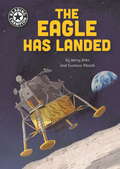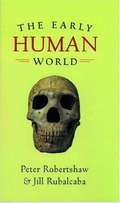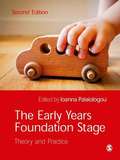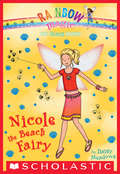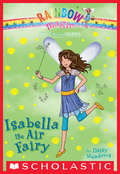- Table View
- List View
The Dreamway
by Lisa PapademetriouNew York Times bestselling author Lisa Papademetriou delivers her most fantastical, emotional story yet in this tale of a young girl’s journey into her dreams to save her brother from the darkness that surrounds him. Perfect for fans of A Wrinkle in Time,The Phantom Tollbooth, and Echo. Every night, your sleeping body stays in your bed, while the you of you travels deep beneath the earth to ride the complex rails of the Dreamway....Stella Clay thought it was just another ordinary day at her drab gray school. Then her twin brother, Cole, is attacked by a shadowy creature on their way home, and Stella’s world turns positively peculiar. Suddenly, her brother seems different, almost dimmer, like a candle about to flicker out. And then a talking mouse shows up in her bedroom. Stella discovers that the real Cole has been taken prisoner in the Dreamway. Determined to find him, she sets out with the “help” of a stuck-up rodent, a nervous dragonfly, and a mysterious pirate, and finds her way to the darkest edge of the Dreamway to bring her brother home…before he's trapped forever. In this allegorical exploration of childhood depression, with a moving author note that follows, Lisa Papademetriou gently and safely illustrates for her readers the emotional effects of anger, anxiety, and insecurity—and illuminates a pathway to hope and recovery.
The Drowning of Villa Epecuén (Fountas & Pinnell Classroom, Guided Reading)
by Oscar SilverNIMAC-sourced textbook
The Duck in My Bathtub
by Dan CrawfordAfter the pond dries out, the duck has to swim in the bathtub instead. The duck likes it so much, it won't leave!
The Ducklings (Fountas & Pinnell Classroom, Guided Reading)
by Patrizia Donaera Susan BuckleyNIMAC-sourced textbook. Quack! Quack! How do baby ducks learn? They listen to their mother.
The Dyerville Tales
by M. P. KozlowskyVince Elgin is an orphan, having lost his mother and his father in a fire when he was young, but beyond that, his life hasn't been much of a fairy tale. With only a senile grandfather he barely knows to call family, Vince was interned in a group home, where he spun fantastical stories and dreamed that his father, whose body was never found, might one day return for him. But it's been a long time since the fire, a long time since Vince has told himself a story worth believing in.That's when a letter arrives, telling Vince his grandfather has passed away. Vince cannot explain it, but he's convinced that if his father is somehow still alive, he'll find him at the funeral. He strikes out for the small town of Dyerville carrying only one thing with him: his grandfather's journal. The journal tells a tale that could not possibly be true: the story of his grandfather's young life with witches, giants, magical books, and evil spirits. But as Vince reads on and gets closer to Dyerville, fact and fiction begin to intertwine, and Vince finds that his very real adventure may have more in common with his grandfather's than he ever could have known.M. P. Kozlowsky, author of Juniper Berry, has crafted a powerfully imaginative novel of the spaces in life where fantasy and reality intersect, and a touching story of the things we give up to recover the things we've lost.
The Dynamic Constitution: An Introduction to American Constitutional Law
by Richard H. Fallon Jr.The US Constitution is by no means just a fragile nut-brown document left in a nice glass case at the end of some corridor. Fallon (constitutional law, Harvard Law School) focuses on the social impact of the Constitution, and he begins with its original design and describes the theories and processes of judicial review. He examines civil rights including freedom of speech and association, freedom of religion, protection of economic liberties, equal protection, and fundamental rights. He analyzes the separation of powers, elections and political democracy, limits on state power and resulting individual rights, war and emergency, the reach of the Constitution and the enforcement power of Congress. After his very interesting conclusion about the future of constitutional law, he takes that fragile document out of its case and prints it as an appendix, for those amongst us who have misplaced it somewhere. Annotation ©2004 Book News, Inc. , Portland, OR (booknews. com)
The Dynamics of Family Policy
by Alice K. Butterfield Cynthia J. Rocha William H. ButterfieldFamilies, in whatever form they may take, are at the center of all our lives. In the absence of a comprehensive national family policy, any policy that attempts to alter our lives peripherally can affect the stability, composition, and future of our families. In the United States, all policybecomes family policy. Such is the position of the authors of The Dynamics of Family Policy. This book challenges readers to redefine and broaden definitions of the family to reflect fundamental and recent demographic shifts in its structure. Devolution and managed care are among the nine major themes that weave their way through the chapters of the book. The book provides an approach topolicy analysis and advocacy that takes politics, power, and social problems into account. The authors provide an in-depth and detailed coverage of social policy in areas such as poverty, work and employment, food, housing, and welfare, health care, and family violence. Additional chapters addressfamily-focused policy initiatives such as marriage incentives, family caregiving across the lifespan, and the care and support of children. The book includes exercises and assignments for readers who want to become more actively involved in advocacy and policy practice. The Dynamics of Family Policy explores the roles professionals play in developing, implementing, and monitoring family policy. The book's combination of a comprehensive government policy account and a family-focused analytic perspective will enable students to maximize their understanding as theybegin their careers in the helping professions.
The Dynamics of Persuasion: Communication and Attitudes in the 21st Century
by Richard M. PerloffA textbook revised from the 1993 first edition not only to incorporate events and changes in the technology of communication, but also to focus more on the role theory and research play in persuasion in American society, and the ethical implications of ideas and research. Annotation (c)2003 Book News, Inc., Portland, OR (booknews.com)
The Dynamics of Social Welfare Policy (Fourth Edition)
by Joel Blau Mimi AbramovitzThe Dynamics of Social Welfare Policy uses the lens of an innovative policy model and an emphasis on social change to break new ground in social welfare policy texts. Starting from the explicit premise that every kind of social work practice embodies a social policy, the book stresses that policy knowledge enables social workers to help clients as well as to help themselves. Drawing on this awareness, the text then makes the standard social welfare policy material come alive by asking two new questions: 1) what factors trigger social change in these social policies?; and 2) how do these factors affect the social policies that influence what social workers actually do? To answer these questions, it develops a five-part policy model, which shows, through full chapters on each subject, how economics, politics, ideology, social movements, and the history of social welfare define social welfare policy.
The Dyscalculia Toolkit
by Ronit BirdWith over 200 activities and 40 games this book is designed to support learners aged 6 to 14 years, who have difficulty with maths and numbers. Ronit Bird provides a clear explanation of dyscalculia, and presents the resources in a straightforward fashion.<P><P> New to this second edition:<P> - even more activities, games and printable resources <P> - additional material, provided on the easily accessible CD-ROM<P> - a table indicating which difficulties are supported by which activities<P> - material that caters for a wider range of abilities and ages.<P> This book and accompanying CD meet the needs of specialist and non-specialist teachers who are working with learners with difficulties in maths in mainstream settings. It is equally useful as a resource to recommend to parents who want to support their children's learning.
The EMC Write-In Reader: Reading Strategies and Test Practice
by EMC Paradigm Publishing CompanyRedwood Level Reading Strategies
The EMC Write-in Reader: Reading Strategies and Test Practice, Birch Level
by EMC/Paradigm Publishing Editorial staffThe EMC Write-in Reader shows you how to use reading strategies before, during, and after reading and includes activities that develop your comprehension, fluency, and vocabulary skills. This portable anthology guides you in using reading strategies--reading tools that help you get more meaning from what you read. Questions and tips in the margins prompt you to record your thoughts and notes as you read.
The Eagle Has Landed: Independent Reading 18 (Reading Champion #459)
by Jenny JinksRelive the story of the first moon landing and the perilous mission of the astronauts aboard the Apollo 11.This first colour chapter book is a perfectly levelled, accessible text for Key stage 2 readers aged 10-11 or in year 6. Reading Champion offers independent reading books for children to practise and reinforce their developing reading skills.Fantastic, original stories are accompanied by engaging artwork and activities to provoke deeper response and encourage writing. Each book has been carefully graded so that it can be matched to a child's reading ability, encouraging reading for pleasure.The Key Stage 2 Reading Champion Books are suggested for use as follows:Independent Reading 11: start of Year 3 or age 7+Independent Reading 12: end of Year 3 or age 7+Independent Reading 13: start of Year 4 or age 8+Independent Reading 14: end of Year 4 or age 8+Independent Reading 15: start of Year 5 or age 9+Independent Reading 16: end of Year 5 or age 9+Independent Reading 17: start of Year 6 or age 10+Independent Reading 18: end of Year 6 or age 10+
The Early Human World (The World in Ancient Times #1)
by Jill Rubalcaba Peter RobertshawA six-million-year-old jaw bone in Ethiopia proves to be a piece of the earliest hominid discovered-so far. Big Mama, who used a tree branch to escape from a zoo in Holland, is found sipping chocolate milk at a local restaurant. Nandy, a 50,000-year-old skeleton surrounded by flower pollen in Iraq, casts doubt on the beastly reputation of an early hominid. Found frozen in the Alps, Otzi reveals what people in Europe ate 5,000 years ago. Ardipithecus ramidus kadabba, a chimpanzee, a Neandertal, and the Iceman are just some of the characters who make up The Early Human World. Peter Robertshaw and Jill Rubalcaba tell the story of early human life using an incredible variety of primary sources: 3.5-million-year-old footprints preserved by a volcano provide evidence of our ancestors' walking on two legs. Stone flakes fashioned 2 million years ago prove early hominids used tools. Bears, lions, and rhinoceroses painted in a cave 30,000 years ago reveal our ancestors' artistic side. An 8,500-year-old dog grave shows the extraordinarily long history of man's best friend. This evidence helps archaeologists decipher not just how we came to be the Homo sapiens we are today, but also what life may have been like for our earliest ancestors. The first Australians encountered freakishly gigantic beasts: kangaroos as big as houses and tortoises the size of cars. The Sahara Desert was once a fertile land, supporting herds of cattle, sheep, and goats. The Early Human World takes readers to sites around the world as archaeologists piece together the clues to our past. For grades 6-8.
The Early Years Foundation Stage
by Ioanna PalaiologouThe Early Years Foundation Stage has been praised by academics and students for its theoretical underpinning and practical case studies. In the light of the revised EYFS, the new edition combines a comprehensive range of topics, up to date coverage of the EYFS curriculum, additional case studies, an increased focus on critical reflection, and access to free journal articles relating to key topics. It is an ideal resource for students undertaking any Early Years or Early Childhood Studies courses, or those working toward the Early Years Teacher qualification. <P> <P> This second edition introduces new chapters on: <P> * Historical developments in early years educational policy <P> * Implementation of EYFS <P> * Play-based learning <P> * Observational recordings and analysis in the EYFS <P> * Working in partnership with parents <P> * Safeguarding children <P> * Children's health <P> * Inclusion in the early years <P> * Leadership <P> * Literacy. <P> Outstanding Learning Features: <P> * Up to date coverage of revised EYFS <P> * New two-colour layout makes the book user-friendly and easy to navigate <P> * Chapter aims identify what each chapter will cover at a glance <P> * Case studies in each chapter help you to link theory to practice <P> * Further reading directs you to external resources to deepen your understanding <P> * Reflection tesks help you reflect on how the chapter can be applied to your personal and professional development. <P> Visit www.sagepub.co.uk/Palaiologou2e for free access to a selection of SAGE Journal Articles related to key topics in the book.
The Earth And Its Peoples: A Global History (AP Edition)
by David Northrup Lyman Johnson Steven Hirsch Richard Bulliet Pamela Crossley Daniel HeadrickFeaturing a beautiful new design, THE EARTH AND ITS PEOPLES, Sixth Edition, presents world history in a balanced, global framework, shifting the focus away from political centers of power. This truly global world history book employs a fundamental theme-the interaction of human beings and the environment-to compare different times, places, and societies. Special emphasis is given to technology (in its broadest sense) and how technological development underlies all human activity.
The Earth Dragon Awakes: The San Francisco Earthquake Of 1906
by Laurence YepNIMAC-sourced textbook <p>Part of the ReadyGen Student Classroom Library</p>
The Earth Fairies #1: Nicole the Beach Fairy (The Earth Fairies #1)
by Daisy MeadowsThe fairies are going green!<P> The fairy king and queen have just put together a new team of seven fairies for a very special mission. They are the Earth Fairies! Together, they're going to work their magic to clean up the environment. But they can't do it alone. Luckily, Rachel and Kirsty are ready to help!<P> The beach on Rainspell Island is covered with garbage, and it's putting the sea creatures in danger. But Nicole the Beach Fairy can't do much without her missing magic wand. Can the girls help her track it down?<P> Find the missing magic wand in each book and help save the environment!
The Earth Fairies #2: Isabella the Air Fairy (The Earth Fairies #2)
by Daisy MeadowsThe fairies are going green!<P> The fairy king and queen have just put together a new team of seven fairies for a very special mission. They are the Earth Fairies! Together, they're going to work their magic to clean up the environment. But they can't do it alone. Luckily, Rachel and Kirsty are ready to help!<P> The air on Rainspell Island is thick with smog. Isabella the Air Fairy wants to return the island's fresh ocean breezes and sparkling blue skies. But she can't do anything without her wand!<P> Find the missing magic wand in each book and help save the environment!
